Ali, “Tibet of Tibet”, distant after distant.
She is the origin of the civilization on the Qinghai-Tibet Plateau and the beauty of the unity of man and nature.
Why go to Ali?
Maybe it’s because of the magnificent scenery of the mountains like the sea and the setting sun like blood; or the loneliness and desolation of a lonely journey at the end of the world; or just because of the towering mountains, the calm lake, the clouds above the head, and the wind whistling in the ears. .
1. Mountain: a plateau with three major mountain ranges
Ngari is a plateau jointly supported by the Himalayas, the Gangdise Mountains and the Karakoram Mountains.
When you come to Alipuran, you will be shocked by the beautiful scenery in front of you when you see the two peaks facing each other on the plateau – Mount Kailash and Mount Namunani.
Kailash, the main peak of the Gangdise Mountains; Namunani, the highest peak in the western part of the Himalayas.
Gang Rinpoche is recognized as a “divine mountain” by the four major sects of Tibetan Buddhism, Hinduism, Bon religion, and ancient Jainism; Namunani is the “goddess peak” in the hearts of Tibetan compatriots.

“Sacred Mountain” Gang Rinpoche
Gang Rinpoche’s pyramid-like mountain shape is mysterious, sacred, pure and pure;
The shape of Namunani Mountain is gentle and graceful, with many ridges arranged in a fan shape, and dozens of hills are scattered high and low.

“Goddess Peak” Namunani Peak
Two peaks, two different beauties. Standing at the foot of the mountain, looking up at the high mountain, white clouds and gray dogs, the sky and the earth are long.
2. Water: plateau lakes, as beautiful as jewels
If the mountains on the Ngari Plateau are like the backbone of a man, with strong bones, the lakes scattered on the plateau are like the soft body of a woman, inclusive and melting.
Strong, soft and charming, complement each other, leaning on each other.

holy lake twilight
“Holy Lake” Manasarovar, one of the three holy lakes in Tibetan areas, is a holy place in the hearts of believers.
“Ghost Lake” Laangcuo, the lake is mysteriously blue.
Pangong Lake, an international lake, is gorgeous in water color, with golden aquatic plants swaying in the lake.
Zari Nanmutuo, the third largest lake in Tibet, the water and the sky are the same color, which makes people ecstatic.

pangong lake

The beauty of the Great Lakes, Zari Nanmutuo
3. Soil forest: Thousands of ravines and huge rocks
From Gang Rinpoche at the foot of the “Sacred Mountain”, along National Highway 219 to the west, thousands of ravines come into view.
Looking from a height, the top of the Gaoping mountain is cut and eroded longitudinally into deep gullies, connecting the blue sky at the top and the desert at the bottom, layer upon layer, with different heights.
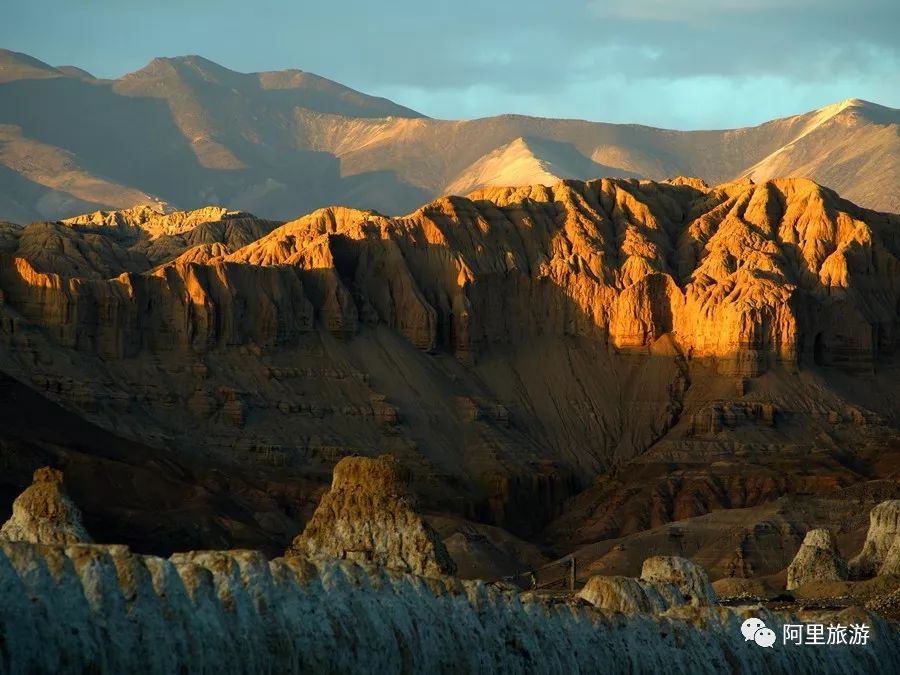
Driving in the soil forest is like walking into a huge maze. Looking up, the caves in the soil forest are like beehives. When you enter through the huge caves at the bottom of the earth forest, you will find that these caves are interconnected like spider webs. Some large caves are tens of meters high, like a huge auditorium, and clear echoes can be heard.
These caves hide the traces of ancient human life, leaving many secrets.

Time is a huge palm, with wind and rain as knives, after millions of years of carving, it finally becomes what it is today. The huge soil forest has experienced the tempering of the years and the loneliness of the night, and has witnessed the vicissitudes of life and the changing stars with its own body.
4. Star: the best stargazing place in the northern hemisphere
People who cannot see the stars in the city can freely observe the splendid Milky Way and watch meteors fly across the sky in Ali.
Ngari area has a high altitude, many clear nights, high atmospheric transparency and dry air, making it the best place for stargazing in the northern hemisphere.
The National Astronomical Observatory has set up an observatory in the Ali area.
Under the observatory is Ngari Dark Night Park. The park has the largest astronomical hall in Tibet, where astronomy science promotional videos are played, allowing you to roam freely in the universe. The starry sky experience area provides a dedicated platform for starry sky photography for photographers. There are astronomical telescopes in the astronomical observation area, so that distant stars can be clearly presented in front of your eyes.

Of course, you can also observe or photograph the starry sky at the foot of Kailash Rinpoche, the banks of Manasarovar Lake, the ruins of the capital of the Guge Kingdom, and the Zanda Earth Forest, and let your thoughts be endless.
5. Highland Elf: Surprises along the way
The road to Ali is a road full of surprises.
For example, if you suddenly see a white butt fleeing away, it is a Tibetan gazelle;
For example, if a wild Tibetan donkey runs across the field, it wants to race with your cart;
For example, a black-necked crane is pacing by the water, like an elegant princess…
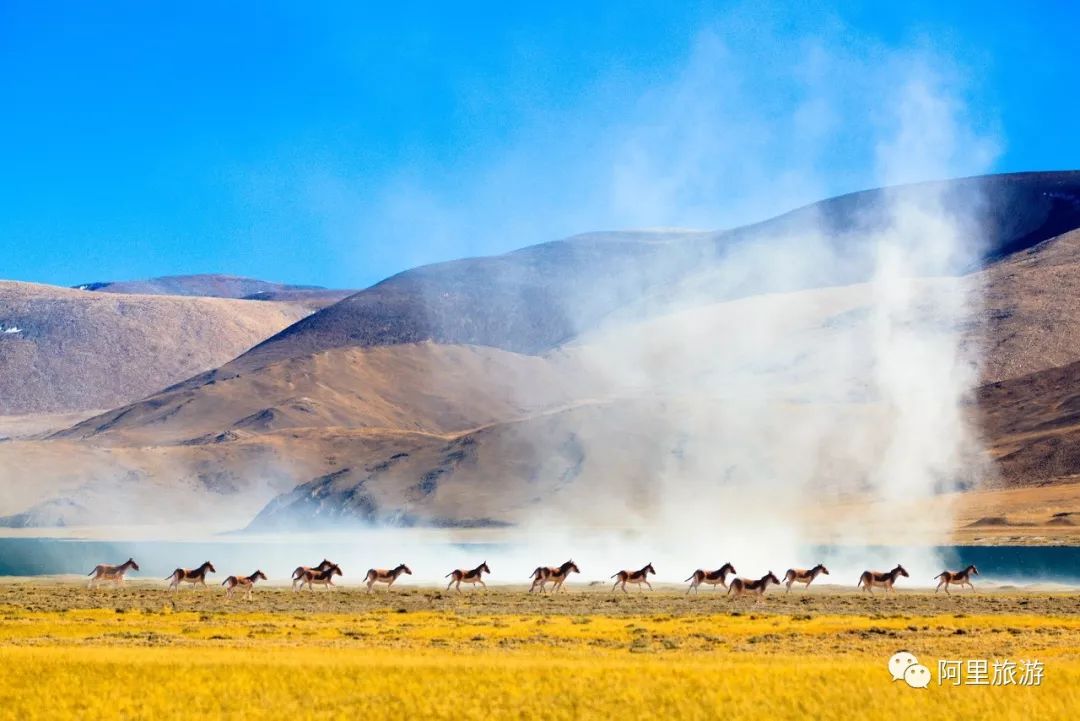
Ngari is located in the core area of the Qiangtang Plateau. There are more than 150,000 animals under national first-class protection alone. It is a paradise for many rare wild animals to roam freely.
So, it’s no surprise to see wild animals.

Waterfowl is one of the favorite creatures in the traveler’s lens.
The red-billed gulls in Manasarovar are crowded with birds; Bangong Lake, with lush water plants and rich aquatic life, attracts tens of thousands of water birds to come and multiply. From May to August every year, there are thousands of Tens of thousands of birds reproduce on Bird Island, and their voices reach the sky.
6. Old Castle: Traveling through time and space, full of fog
The ancient castle is the echo of history, the back of the dynasty, writing the change of dynasty, the rise and fall of honor and disgrace.
Ali has many castles.
The Qulong site in Zanda stands proudly with the help of the majestic mountain, like a roc spreading its wings, which coincides with the Zhang Zhung Dynasty symbolized by the roc.
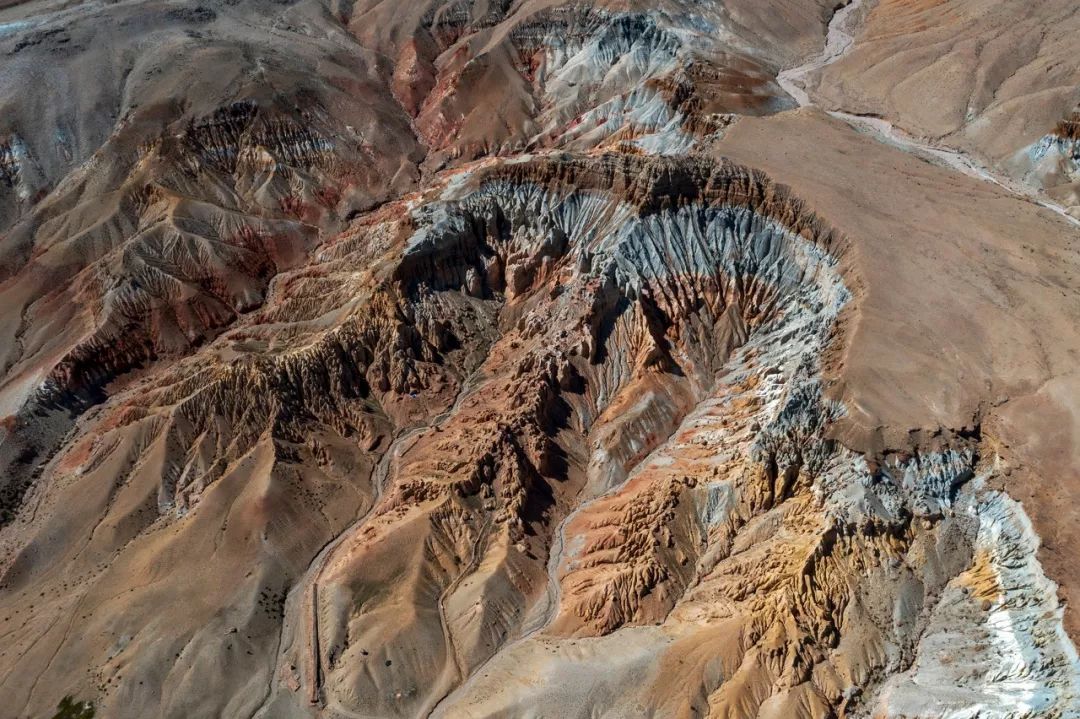
Qulong Ruins
The ruins of the capital of the Guge Kingdom is a huge building complex with more than 300 houses, more than 300 caves and three rows of 10-meter-high pagodas. It is the most mysterious place of Tibetan civilization, bearing the glory of the Guge Dynasty in the past, in a yellow soil forest, peerless and independent.
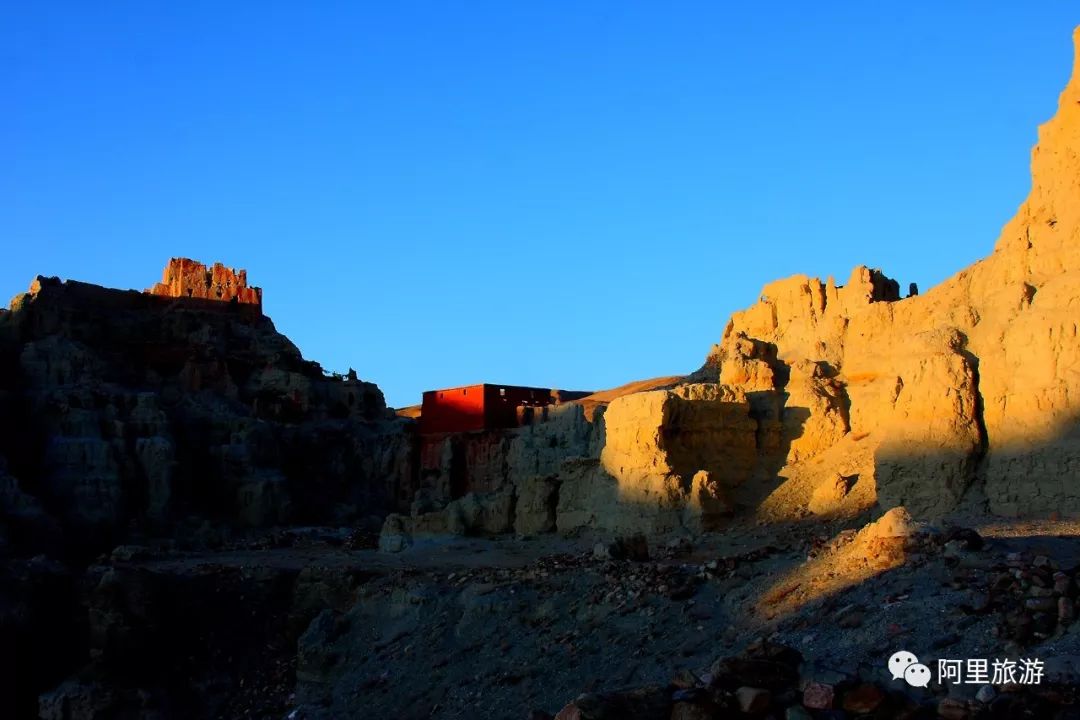
Guge Kingdom Capital Ruins
Guge has several satellite cities.
The Daba site, the palace and castle built by the “Daba King” during the Guge Kingdom, was also an important stronghold integrating religion, politics, military affairs and residential areas in history.
The Xiangzi ruins, one of the big cities of the Guge Kingdom, is also the kingdom’s granary. The ruins are layered and magnificent.
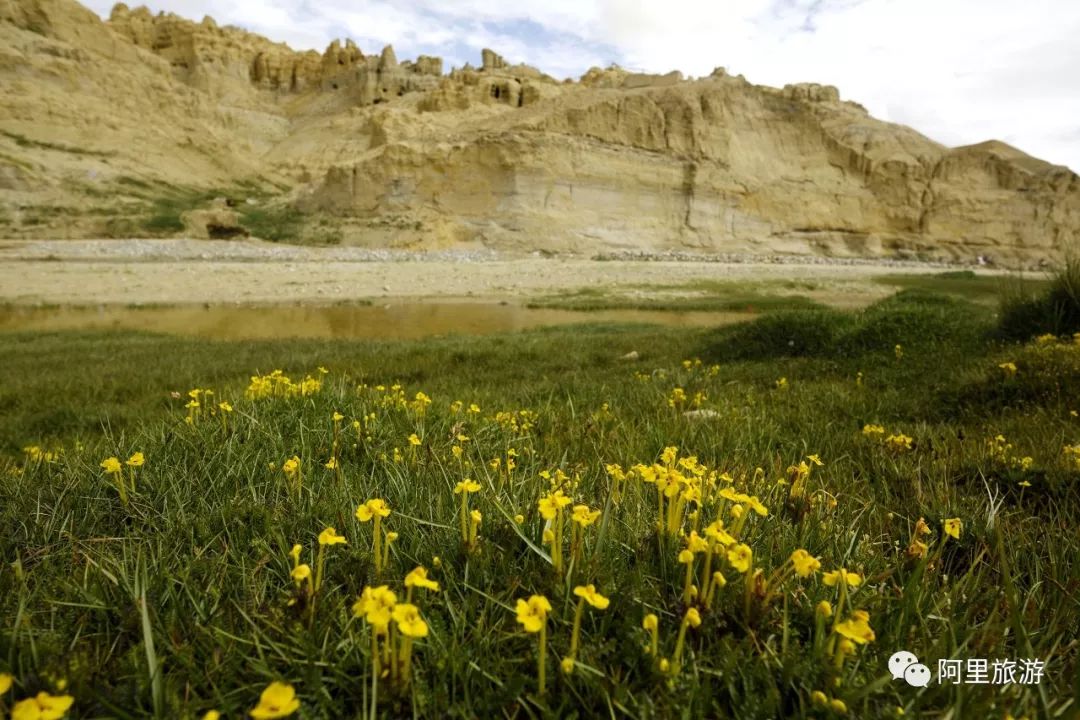
Xiangzi Ruins
Dalaka Castle has the ruins of the Xianbo Temple built by Gandan Caiwang, and the former residence of the Pulanzong government.
Rituzong Castle, the seat of Xianbai, the general of King Gesar, was later the seat of the Rituzong government.
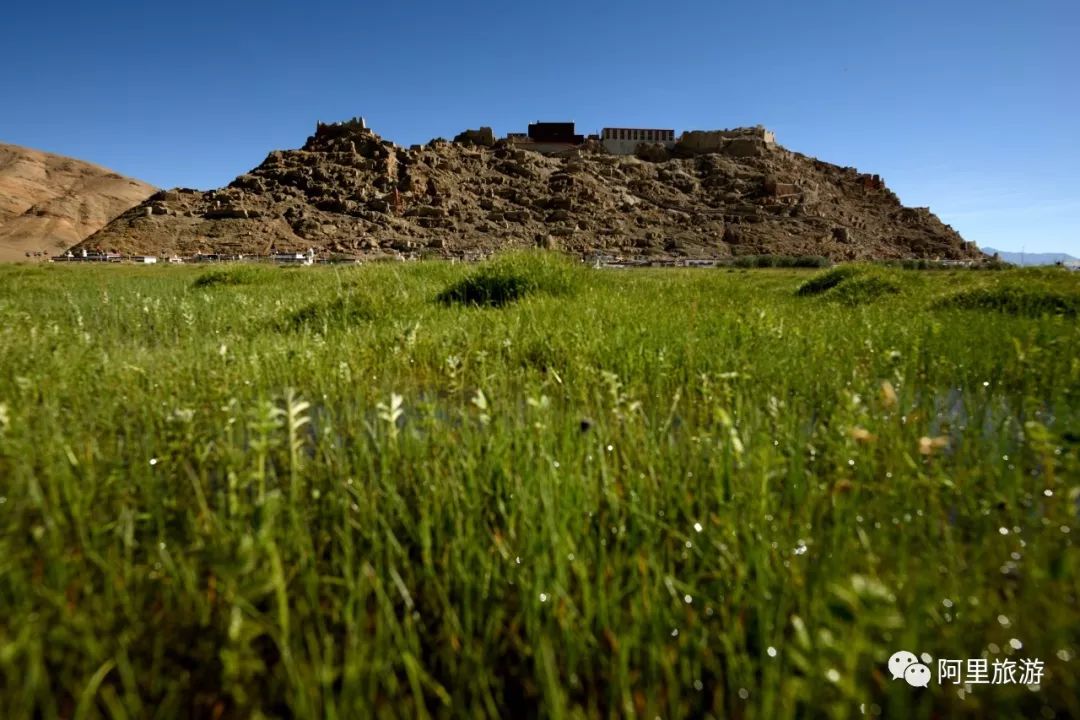
Rituzong Castle
The process of climbing the castle is a process of entering the time and space of history. Every mottled fragment is engraved with the traces of time. The history is turbulent and foggy. What is the truth?
7. Temple: The oldest and most sacred
Ali preserved many temples, and each temple has its own legend.
Zanda Tuolin Temple, the first Buddhist temple in the Ngari area, is an important source of Buddhist post-dharma propagation. The revived Buddhism in the Guge period spread from Tuolin Temple to the entire Tibetan area. The red wall and the soil forest complement each other, which is unique and magnificent.
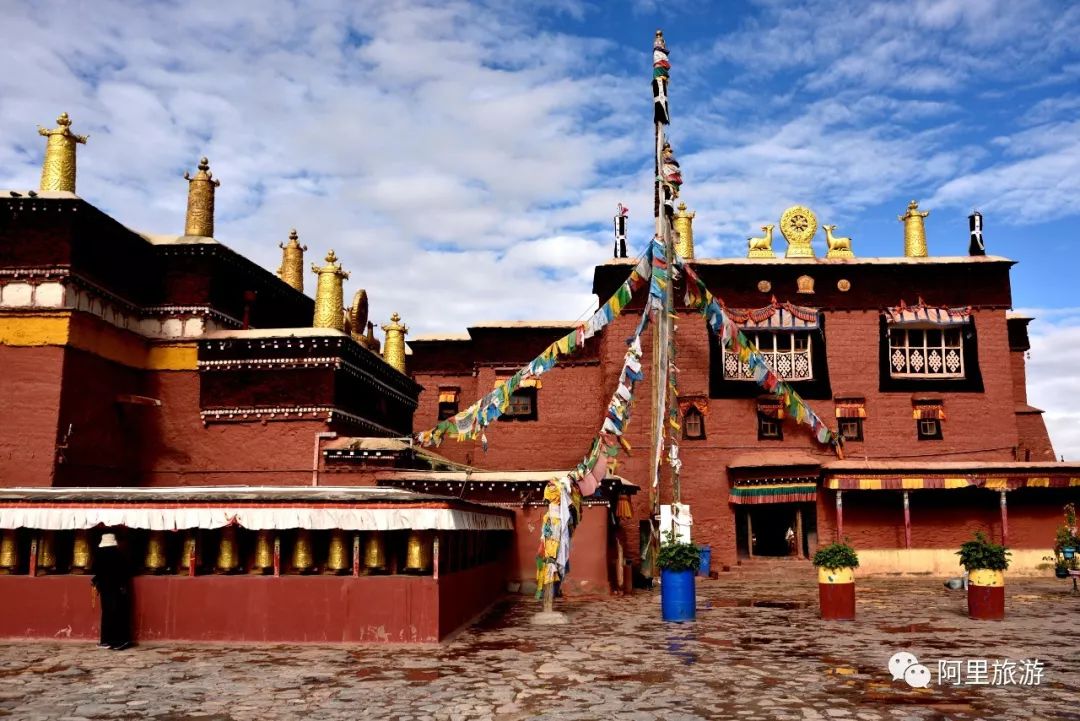
Koja Temple
Purangoja Temple is located at the junction of China, India and Nepal. Every year, many believers from India and Nepal come to worship.
Gargu Rujiang Temple, the only Bon religion temple preserved in Ngari, was built on the site of the birthplace of Bon religion more than 3,000 years ago.
8. Mural: a vivid “photographer”
The murals are the splendid flower of Ali civilization.
Ali in ancient times had a developed civilization and exchanges with neighboring Nepal, India, and Ladakh (now Kashmir), where merchants gathered and were extremely prosperous.
The murals are the “photographer” of Ali’s history. Standing in front of the murals, thousands of years of time rush forward.
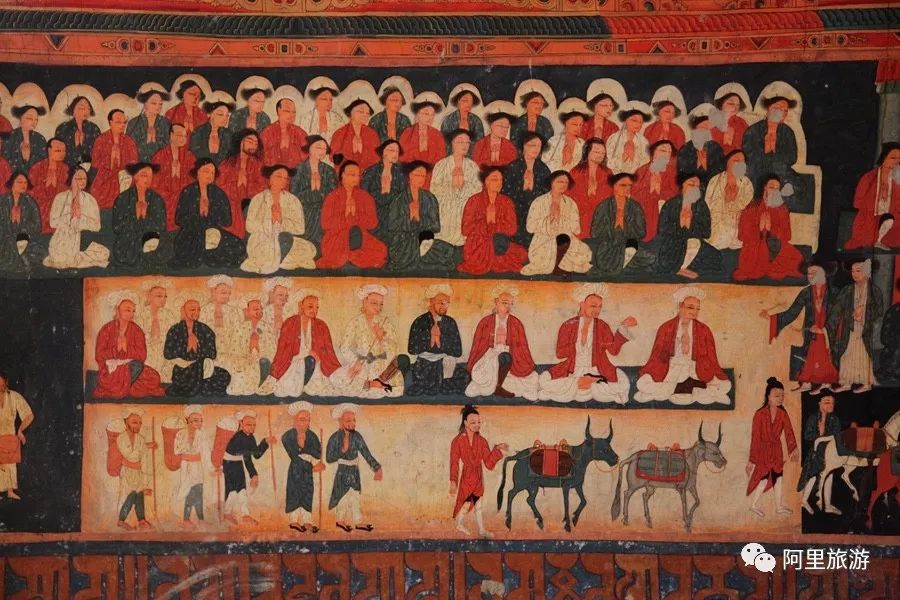
Guge murals
Those who have been to the ruins of the capital of the Guge Kingdom are all amazed by the murals of Guge. In this huge ancient building complex, there are colorful murals painted in the White Temple, Red Temple and Small Scripture Hall.
The mural in Guge Red Hall depicts a picture of a celebration. In the picture, there are musicians in South Asian costumes and masked dancers. People from different countries with different hairstyles come to watch the ceremony.
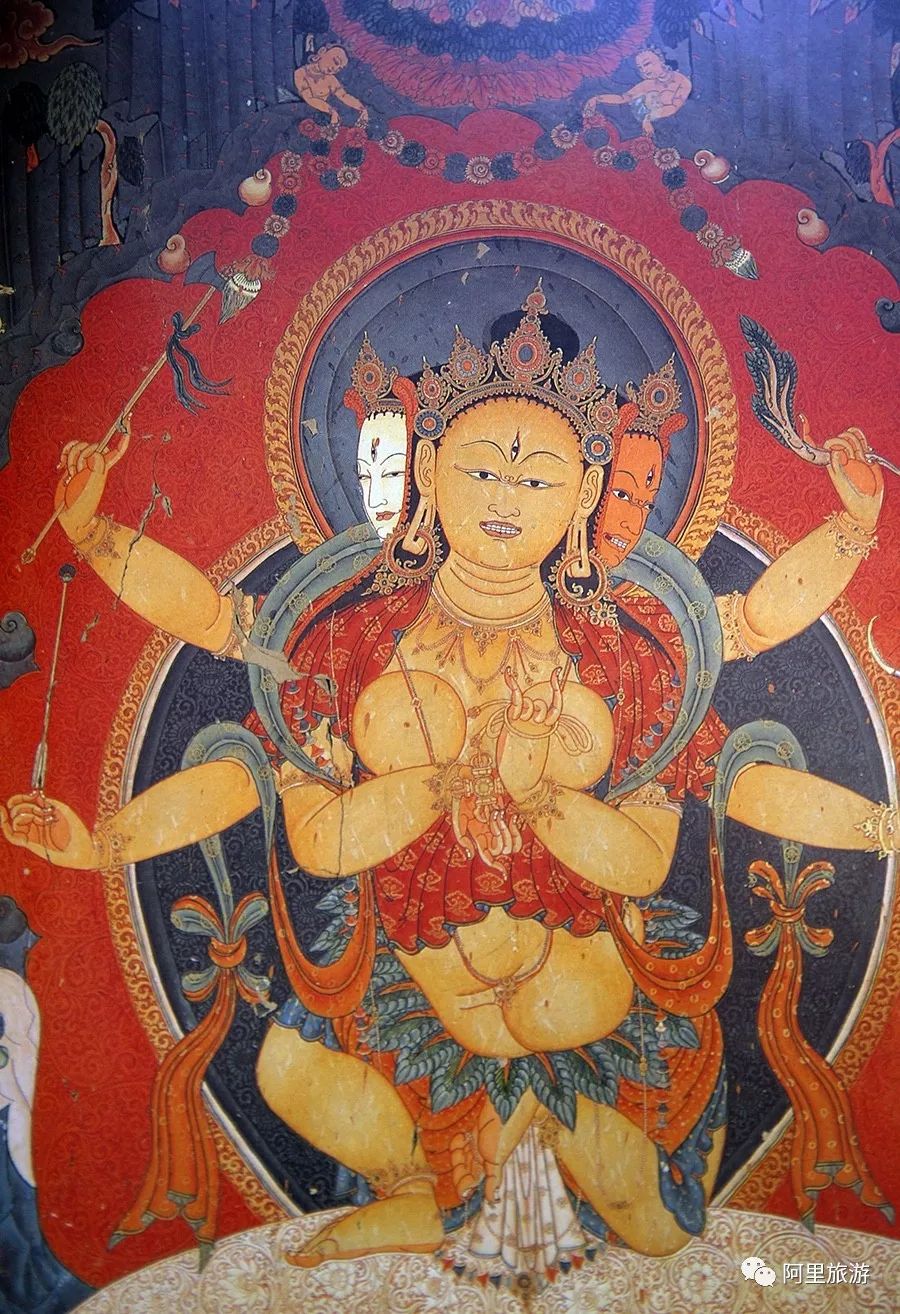
Tuolin Temple murals, the goddess playing the piano
The mural style of Tuolin Temple is deeply influenced by the culture of India, Persia and other western regions. In addition to the general religious gods and Buddha statues, the murals here also include secular heaven and man, kings, eminent monks, translators, envoys, monks, women and children, etc. , from Buddhist rituals to celebration ceremonies, from folk and secular daily life to palace maids incense scenes, all-encompassing and omnipresent.
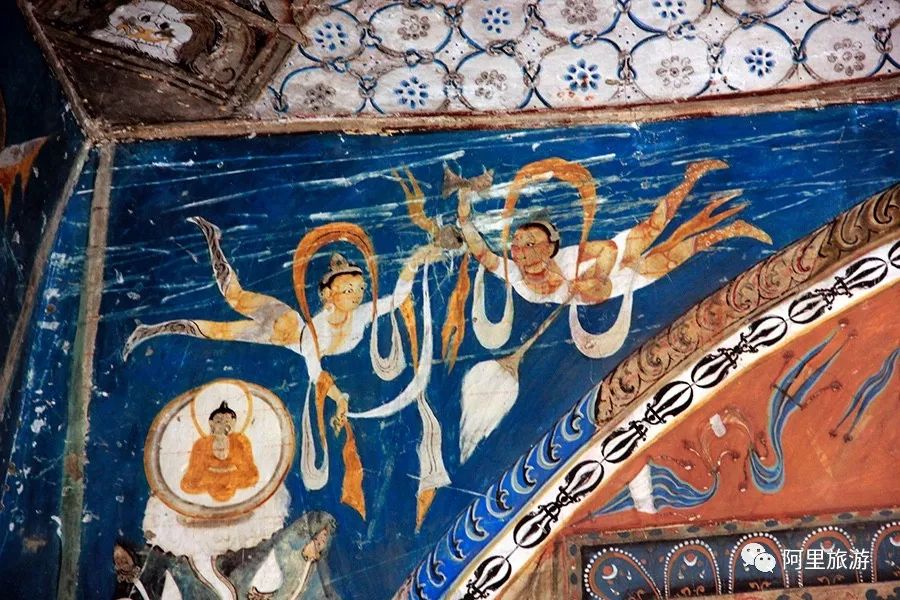
Murals in Dongga Grottoes
50 kilometers northeast of Tuolin Temple, there are two ruins in Donggapiyang, which are the largest Buddhist cave ruins discovered in Tibet so far. The total number of grottoes is nearly 1,000. In the Lifo Cave at the Dongga site, the murals are rich in content, including Buddha statues, statues of offering figures, Buddhist stories, pictures of sayings, pictures of worshiping Buddha, esoteric mandalas, and various decorative patterns. The characters and costumes all have strong Kashmiri elements.
9. Spectacular celestial phenomena, visual feast
Walking on the Ngari Plateau, you are often shocked by various spectacular sights.
Ali’s sunrise is the most stunning, and the ruins of the capital of the Guge Kingdom covered by the sun are golden and dazzling;
The Zanda soil forest is shining brightly; Gang Rinpoche is like a burning flame.
The dusk of Ali, with the brilliance of the setting sun melting gold, is like the sparkling spring river;
The curtain opened on Pangong Lake, and she began her gorgeous performance with heavy makeup.
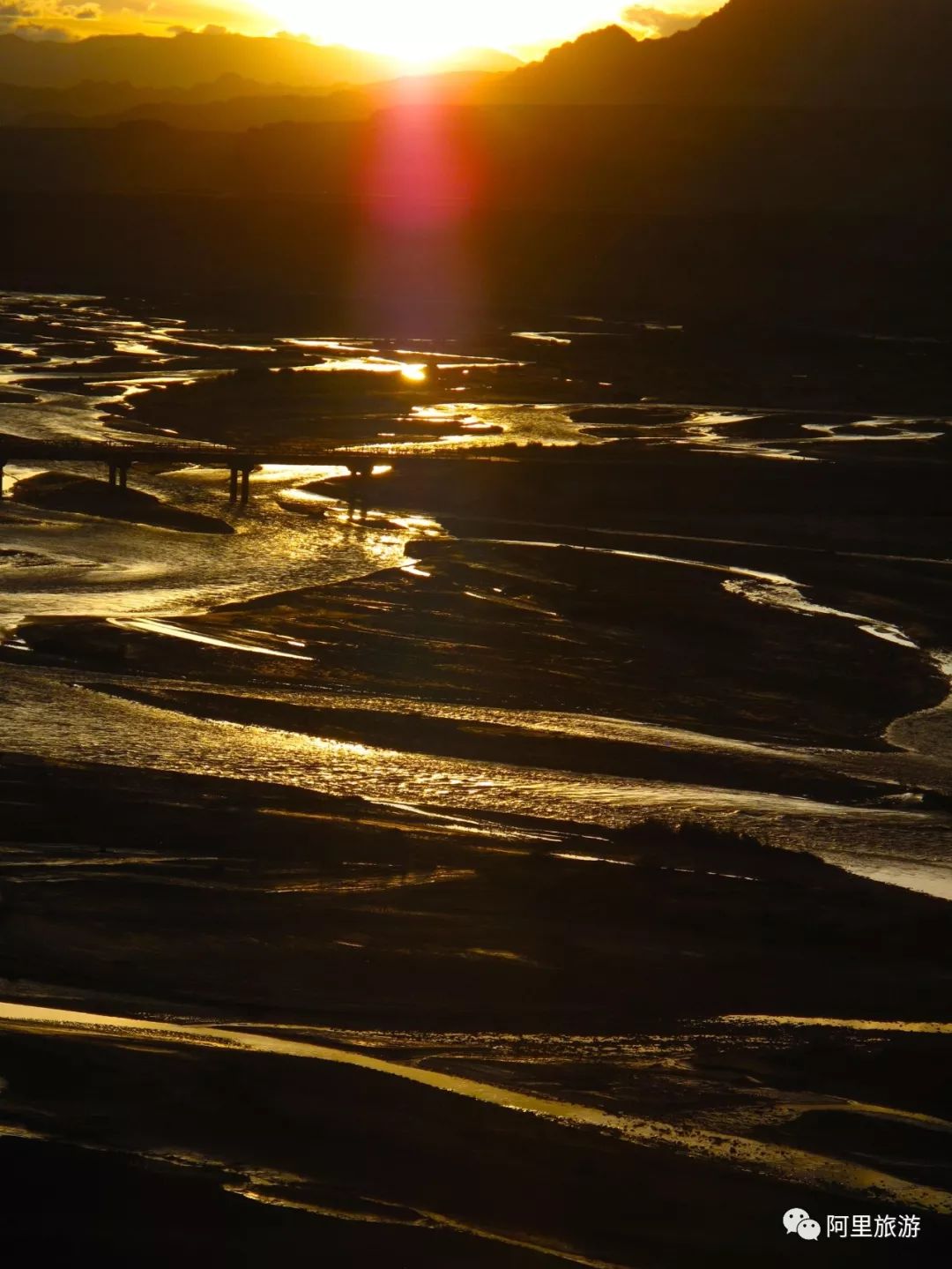
During the rainy season, you are likely to encounter a rain in Ali.
The lightning above the soil forest seemed to pierce the earth, and the black clouds pressed down on the city to destroy it;
A rainbow is erected after the rain, and you pass through the rainbow like a dream.
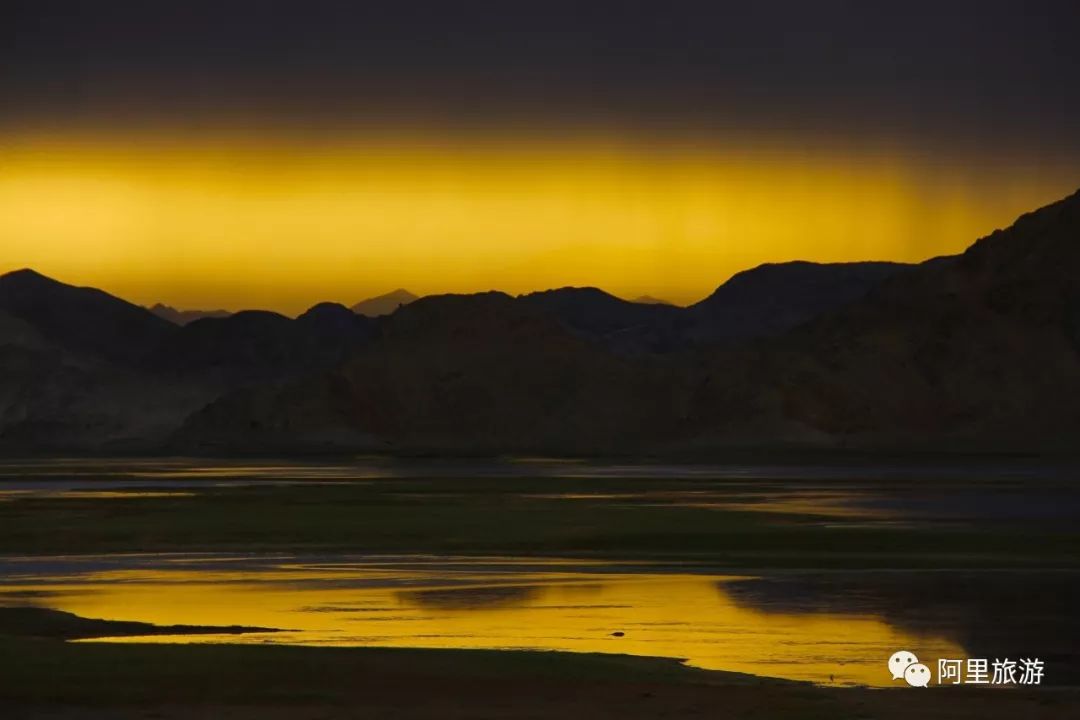
Ali, everywhere is a visual feast, a natural miracle. Walking in Ali will never disappoint.
This is Ali, a place that makes you have to go, go again and again, and dream of it ever since.
(Pictures: Liu Ankang, Li Chuchu, Tenzin Jigme, Yanhai, Wenqing, Five Color Wind Horse)





